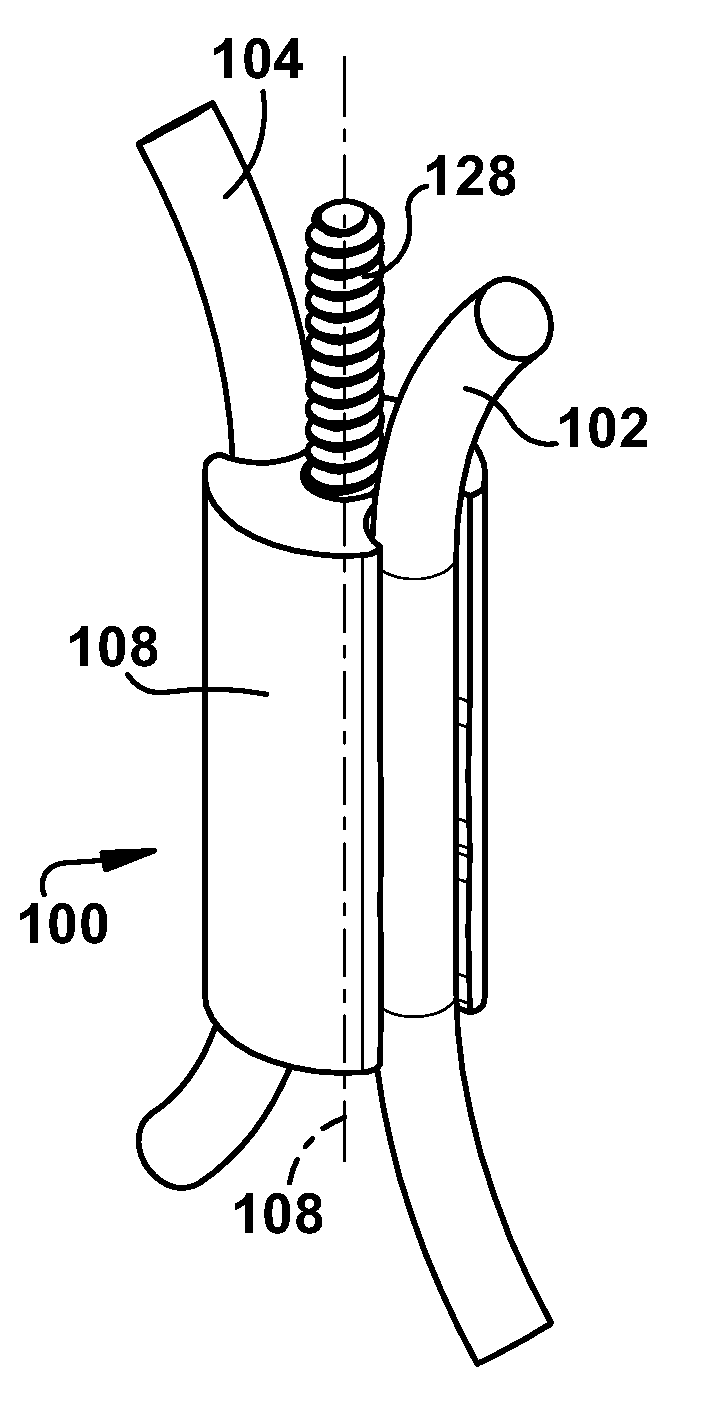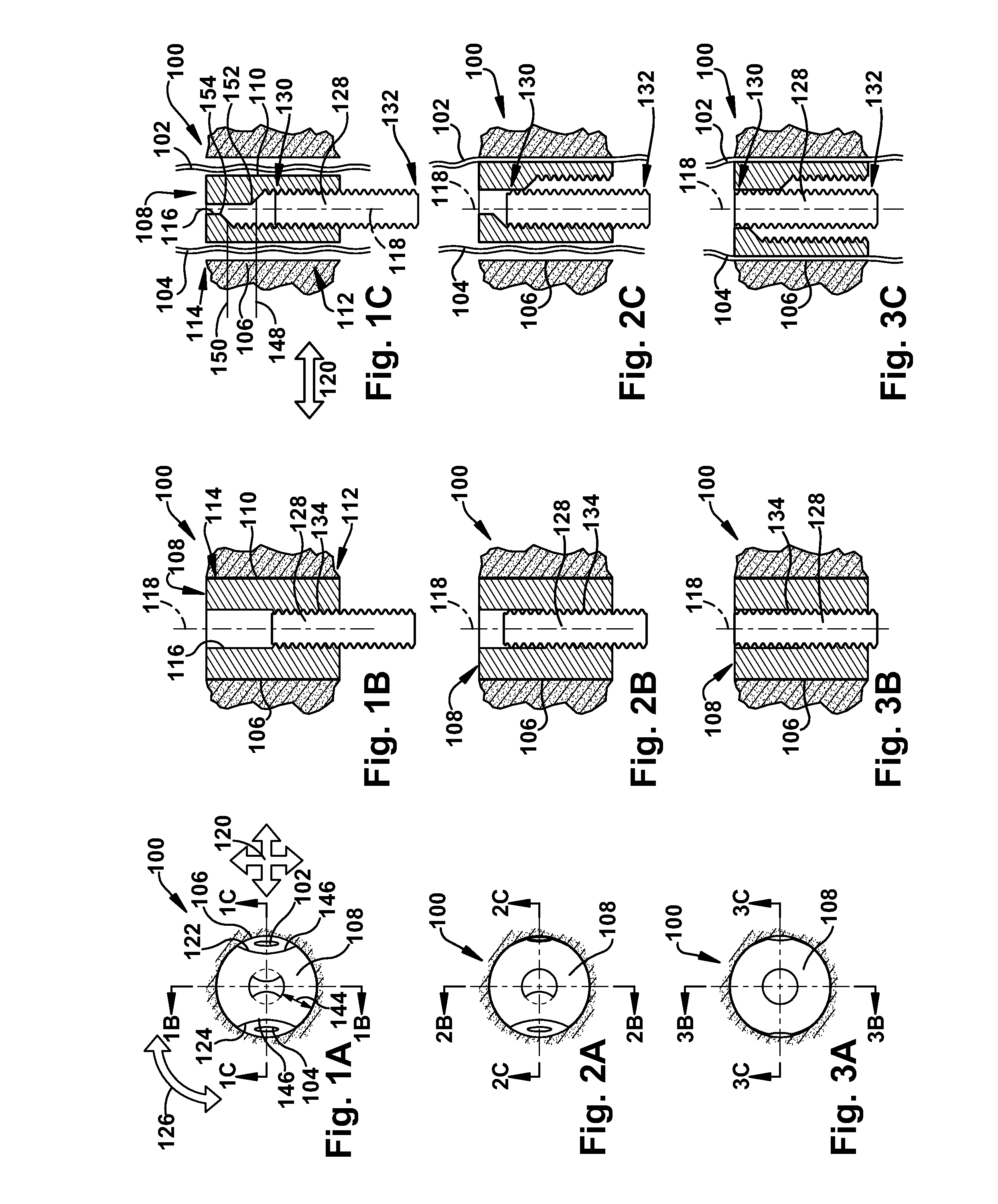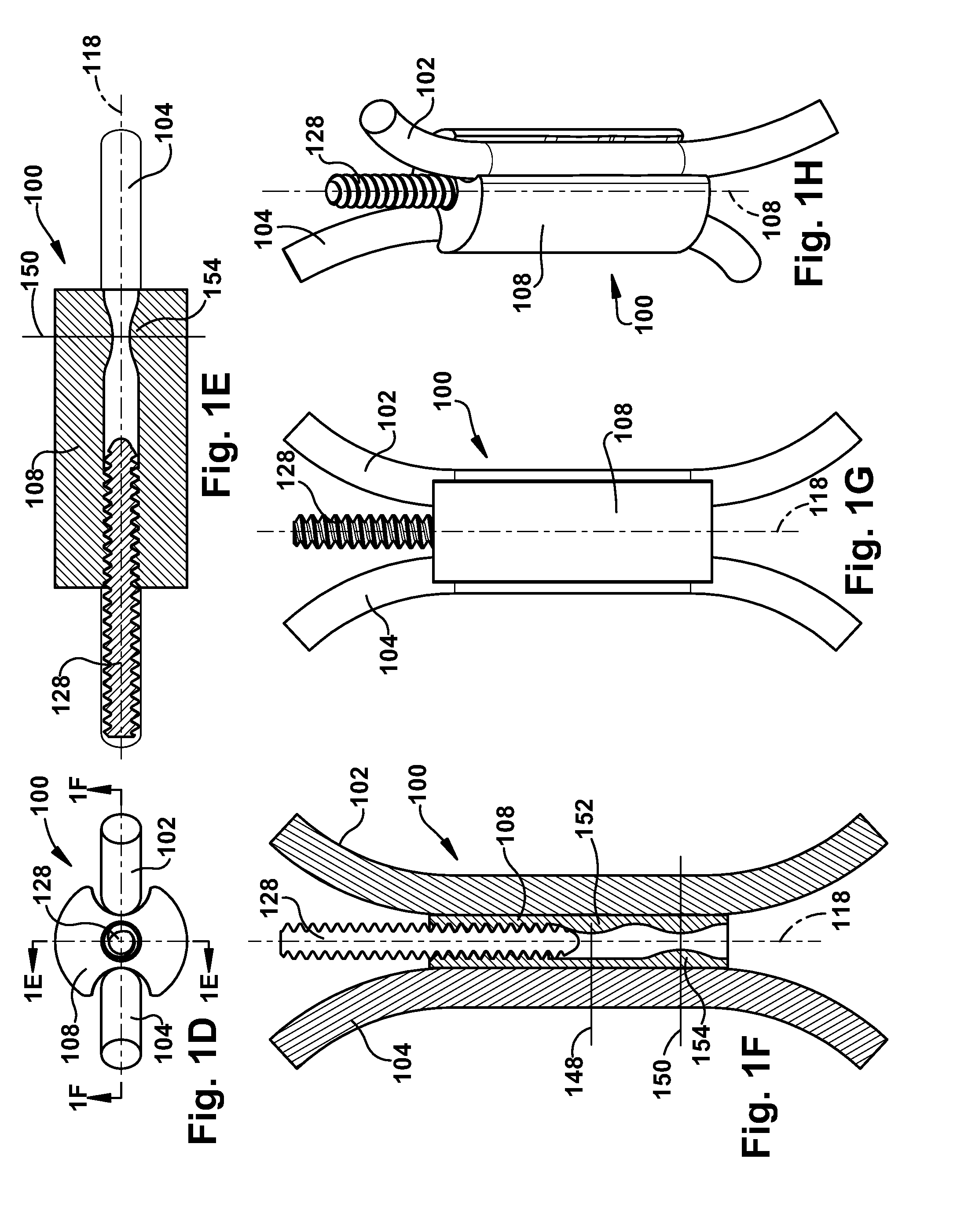Apparatus and method for sequentially anchoring multiple graft ligaments in a bone tunnel
a technology of graft ligaments and sequential anchoring, which is applied in the direction of screws, ligaments, prostheses, etc., can solve the problems of inconvenient operation, inconvenient maintenance, and inability to drill two tunnels in close proximity
- Summary
- Abstract
- Description
- Claims
- Application Information
AI Technical Summary
Problems solved by technology
Method used
Image
Examples
first embodiment
[0039]In accordance with the present invention, FIGS. 1A, 1B, 10, 2A, 2B, 2C, 3A, 3B, and 3C schematically depict an apparatus 100 for anchoring at least two graft ligaments 102 and 104 within a longitudinal bone tunnel 106. More specifically, the apparatus 100 can be a sequentially-actuated graft anchor system 100 for use in anchoring at least two longitudinally extending graft ligaments 102 and 104 within a bone tunnel 106 during replacement of a native anterior cruciate ligament (“ACL”), and will be discussed as such herein. However, one of ordinary skill in the art will recognize that the apparatus 100 may be useful for sequentially anchoring any plurality of elongate strands within an aperture. For example, the apparatus 100 may be used to anchor a plurality of longitudinally extending graft ligaments within a bone tunnel during replacement of a native posterior cruciate ligament.
[0040]A longitudinal sleeve 108 has a sleeve outer surface 110 and longitudinally separated proxima...
second embodiment
[0054]In the embodiment of FIGS. 1A-3C, a substantially straight-sided actuating member 128 interacts with an asymmetrically offset profile on the sleeve inner lumen 116. In contrast, FIGS. 7A-9B schematically depict an apparatus 100b according to the present invention.
[0055]The apparatus 100b of FIGS. 7A-9B is similar to the apparatus 100 of FIGS. 1A-3C and therefore, structures of FIGS. 7A-9B that are the same as or similar to those described with reference to FIGS. 1A-3C have the same reference numbers with the addition of the suffix “a”. Description of common elements and operation similar to those in the previously described first embodiment will not be repeated with respect to the second embodiment. In the embodiment of FIGS. 7A-9B, the sleeve 108 is more rigid than in the previously described embodiment and the asymmetrically offset profile is on the actuating member outer surface 134b. Accordingly, the first and second engagement thresholds 148b and 150b are defined by first...
PUM
 Login to View More
Login to View More Abstract
Description
Claims
Application Information
 Login to View More
Login to View More - R&D
- Intellectual Property
- Life Sciences
- Materials
- Tech Scout
- Unparalleled Data Quality
- Higher Quality Content
- 60% Fewer Hallucinations
Browse by: Latest US Patents, China's latest patents, Technical Efficacy Thesaurus, Application Domain, Technology Topic, Popular Technical Reports.
© 2025 PatSnap. All rights reserved.Legal|Privacy policy|Modern Slavery Act Transparency Statement|Sitemap|About US| Contact US: help@patsnap.com



